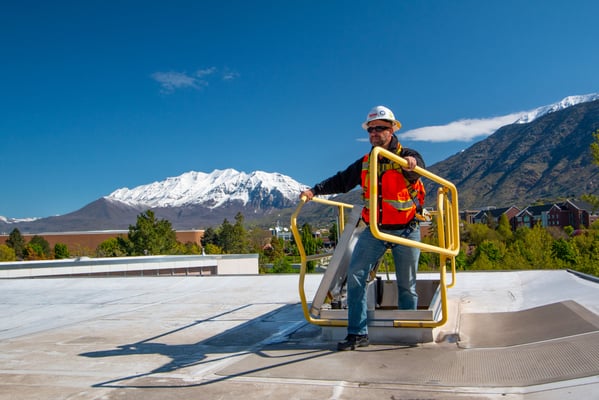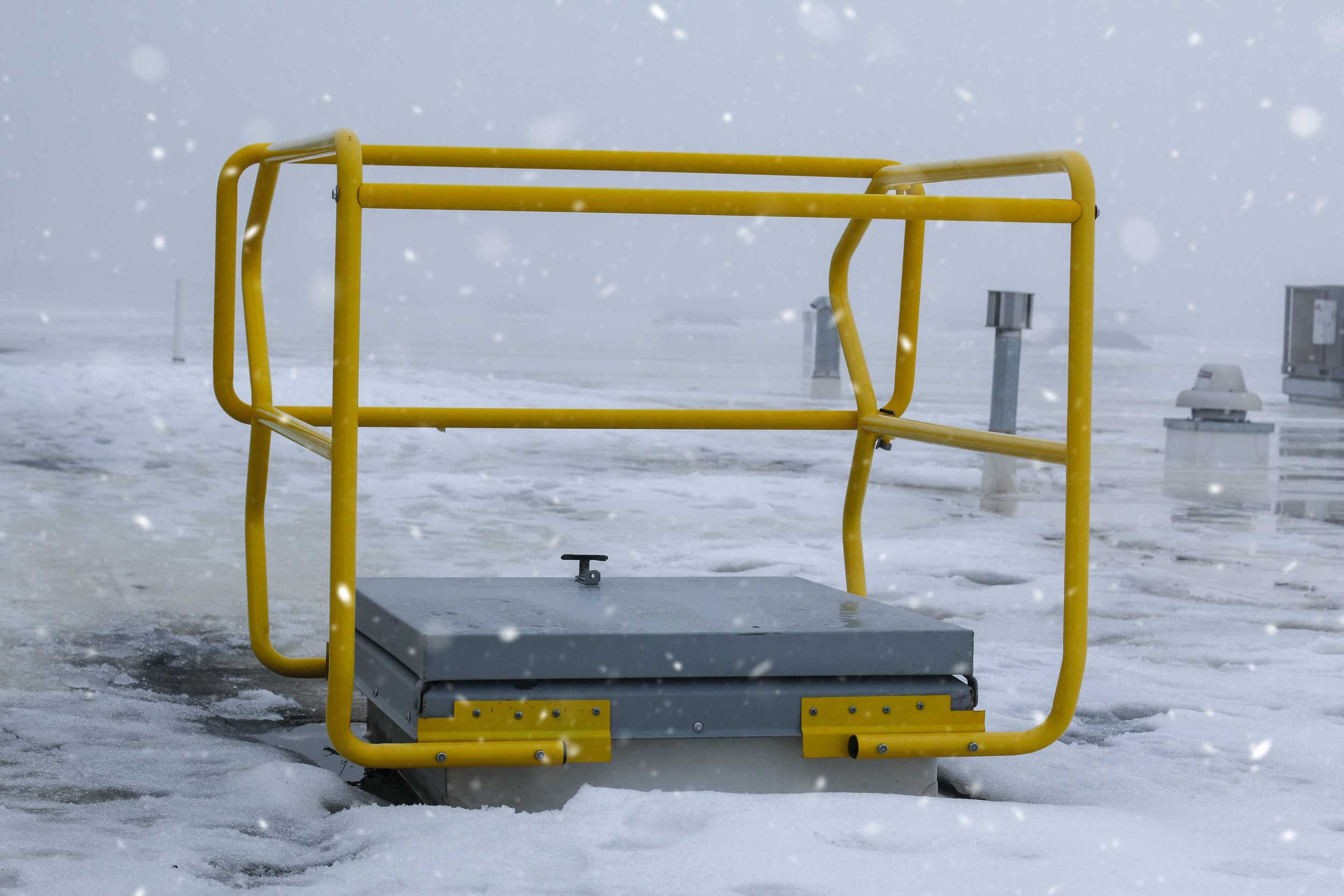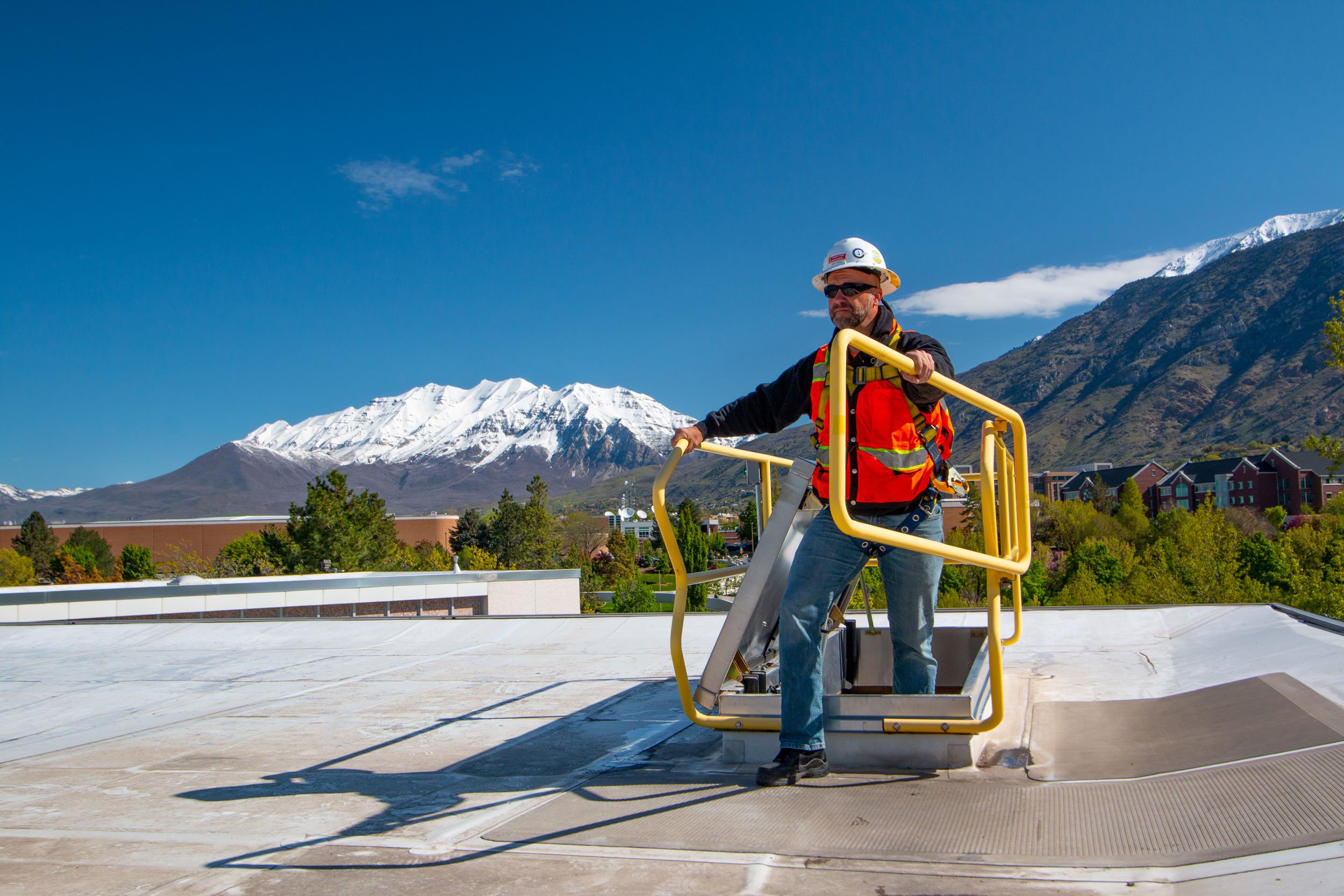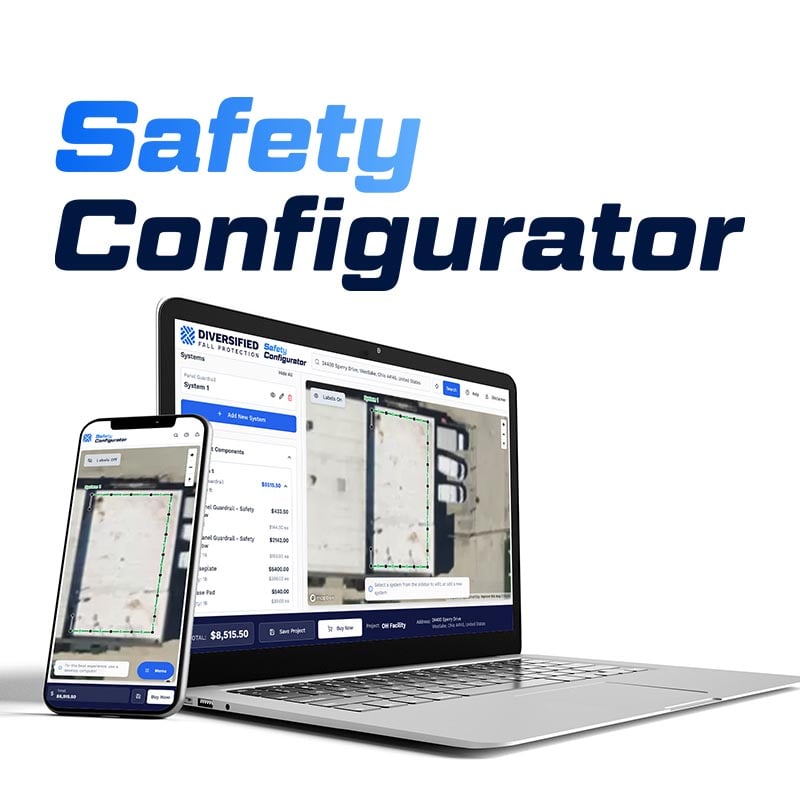
Why Roof Hatches Are One of the Most Dangerous Fall Hazards on a Roof
Falls are far too common, and the results are often devastating. According to the National Safety Council, falls killed 42,114 people at home and work in 2020, making it the second most common cause of unintentional death in the United States. In addition, during that same period, 211,640 workers were hurt badly enough in a workplace fall to need days away from work.
If you ask anybody on the street what the most dangerous part of a roof is, they will undoubtedly tell you that it is the roof's edge. While the edge does pose a significant fall hazard, it is also commonly recognized, which means workers can manage and avoid its potential risks through preplanning and fall protection methods. Unfortunately, unrecognized hazards are often the ones that end up resulting in injuries or accidents. A roof's hatch is a commonly unnoticed hazard that significantly threatens worker safety.
What makes roof hatches so dangerous?
Unlike the roof's edge, a roof access point, like a hatch, is unavoidable. For that reason, and the ones we will discuss below, roof hatches are one of the most dangerous fall hazards on any roof.
Roof hatch doors are tricky to open
Often accessing a roof involves climbing a fixed ladder leading to a hole in the roof covered by a heavy door. First, imagine standing on a fixed ladder 18 feet above the ground below. Now picture attempting to figure out how to use the confusing latch on the heavy steel door positioned above your head. If you have ever entered a roof through a hatch, you know how tricky this setup can be.
Confusing or heavy hatch latches and doors can frustrate workers, prompting them to let go of the ladder to apply more pressure on the door. Unfortunately, needing two hands to open the door forces workers to abandon three points of contact, a ladder safety best practice, which exponentially increases the risk of falls. Also, remember that those entering and exiting roofs are not always familiar with the facility, and it may be their first time, which increases the risk.
Ladders are not tall enough to allow users to enter and exit safely
Now that you have finally opened the hatch, you need to enter the roof. However, the ladder rungs seem to end too soon, and there is nothing above the hatch to grab onto to steady yourself as you climb onto the roof. So you now have an awkward and dangerous situation where you must decide what to grab and step on to make your final entry. You will face the same dilemma when exiting the roof, but now you are forced to blindly search for ladder rungs while not having a solid handhold as your body hangs over a significant fall hazard.
It is not hard to see how dangerous this situation is, but unfortunately, it is also widespread. Many roof access ladders do not provide the stability users need to enter or exit the roof safely because they do not extend 42 inches above the roof level and are, therefore, not OSHA compliant ((1910.23(d)(4)).
Falling through an unprotected roof hatch
Perhaps because hatches can be so challenging to open and close, hatches are often left open. An open hatch creates a fall hazard for anyone in the surrounding area. If additional fall protection like guardrails is not present, it creates a serious fall hazard.
According to OSHA, you must protect employees from falling through any hole that is 4 feet or more above a lower level (1910.28(b)(3)(i)). Installing a passive fall protection solution like a guardrail is one of the best ways to solve this issue. However, even if a hatch has guard rails, they often only protect three sides, meaning there is still a fall risk on the hatch's entry and exit sides.
 Wet or slippery surfaces can further increase the danger of an unprotected roof hatch
Wet or slippery surfaces can further increase the danger of an unprotected roof hatch
What can you do to make your facility's roof hatches safer?
Thankfully the SafePro roof hatch safety solutions from Diversified Fall Protection have solved these persistent hazards. Their solutions offer automatic roof hatch openers and closers to eliminate the difficulty and danger of opening and closing roof hatches from a ladder. Also, their OSHA-compliant ladders offer additional rungs and extend past the roof level to provide users with the stability they need to safely and confidently enter and exit the roof. Finally, they solve the hazard of workers falling through an unprotected hatch with their four-sided guardrail systems with a self-closing gate. To learn more about increasing your facility's roof hatch safety and compliance, contact the fall protection pros at Diversified Fall Protection today.

Schedule an assessment with Diversified Fall Protection
Contact Us to request a fall safety review

b-1.jpg?width=1368&height=1340&name=Rail%20(175)b-1.jpg)

